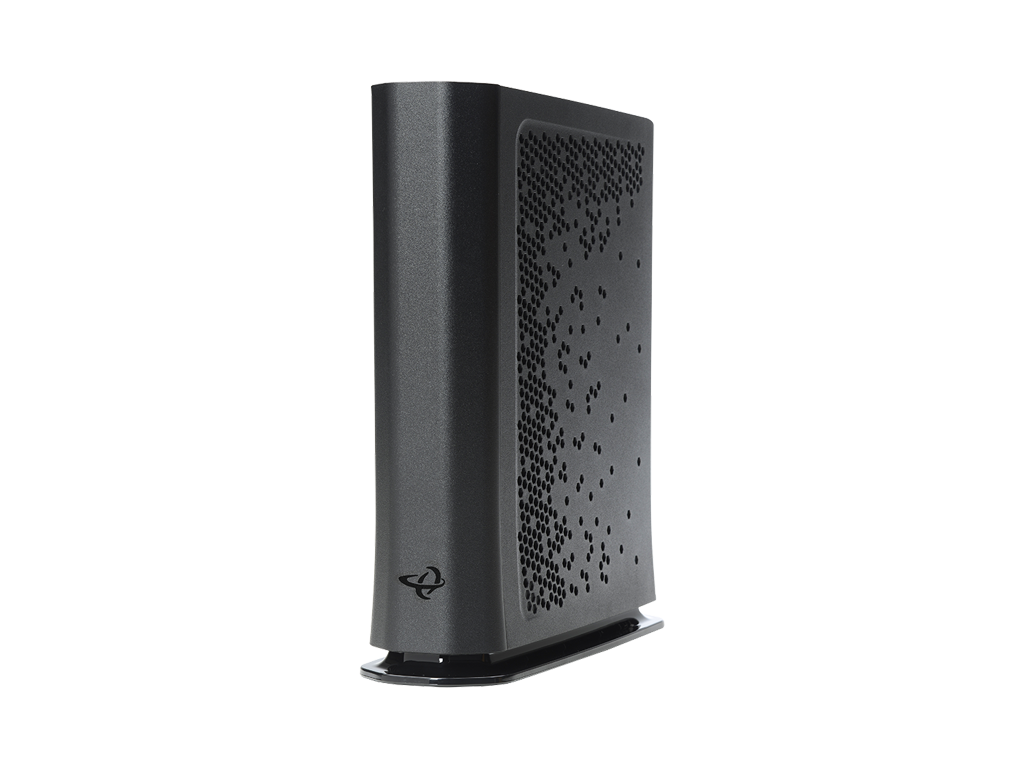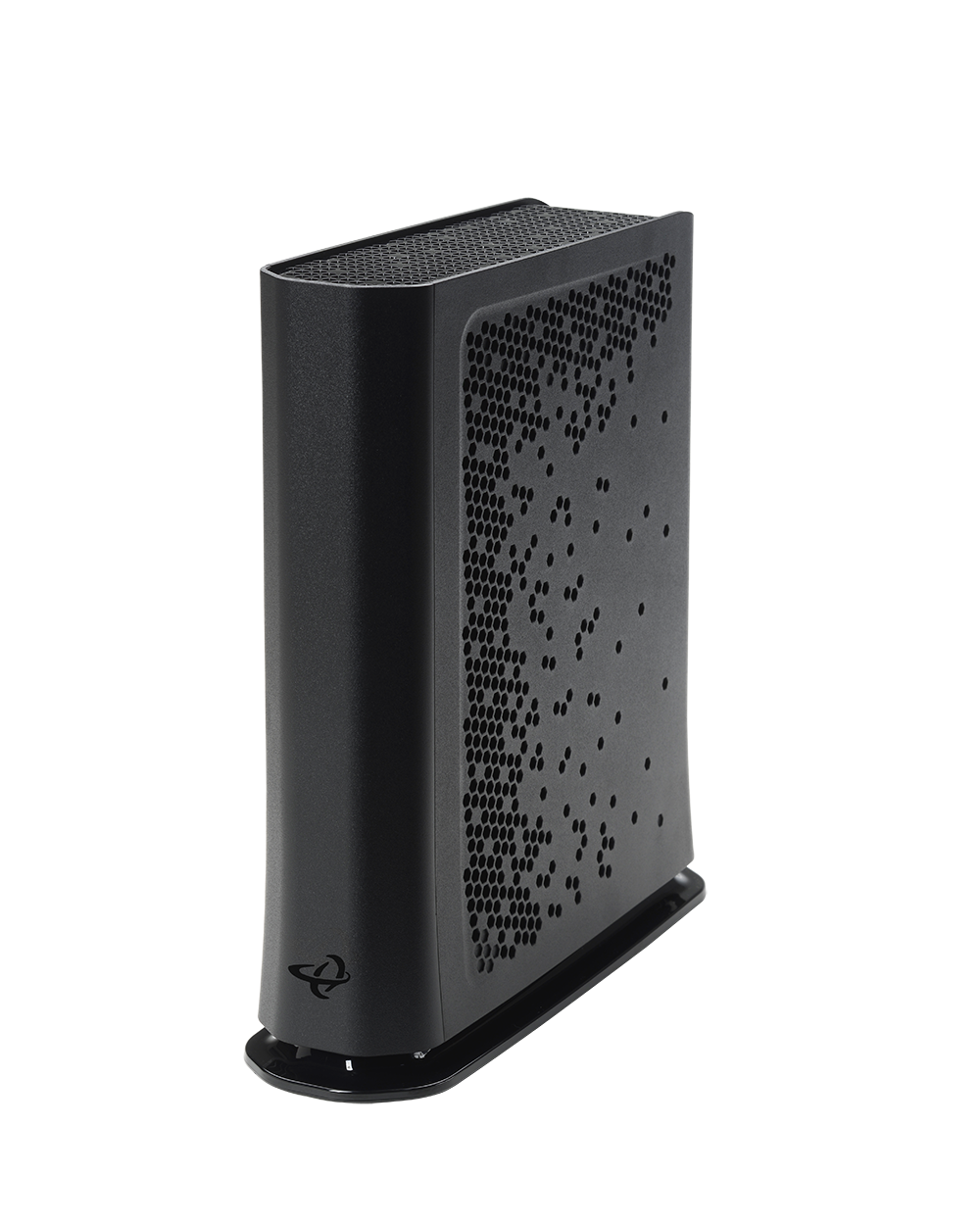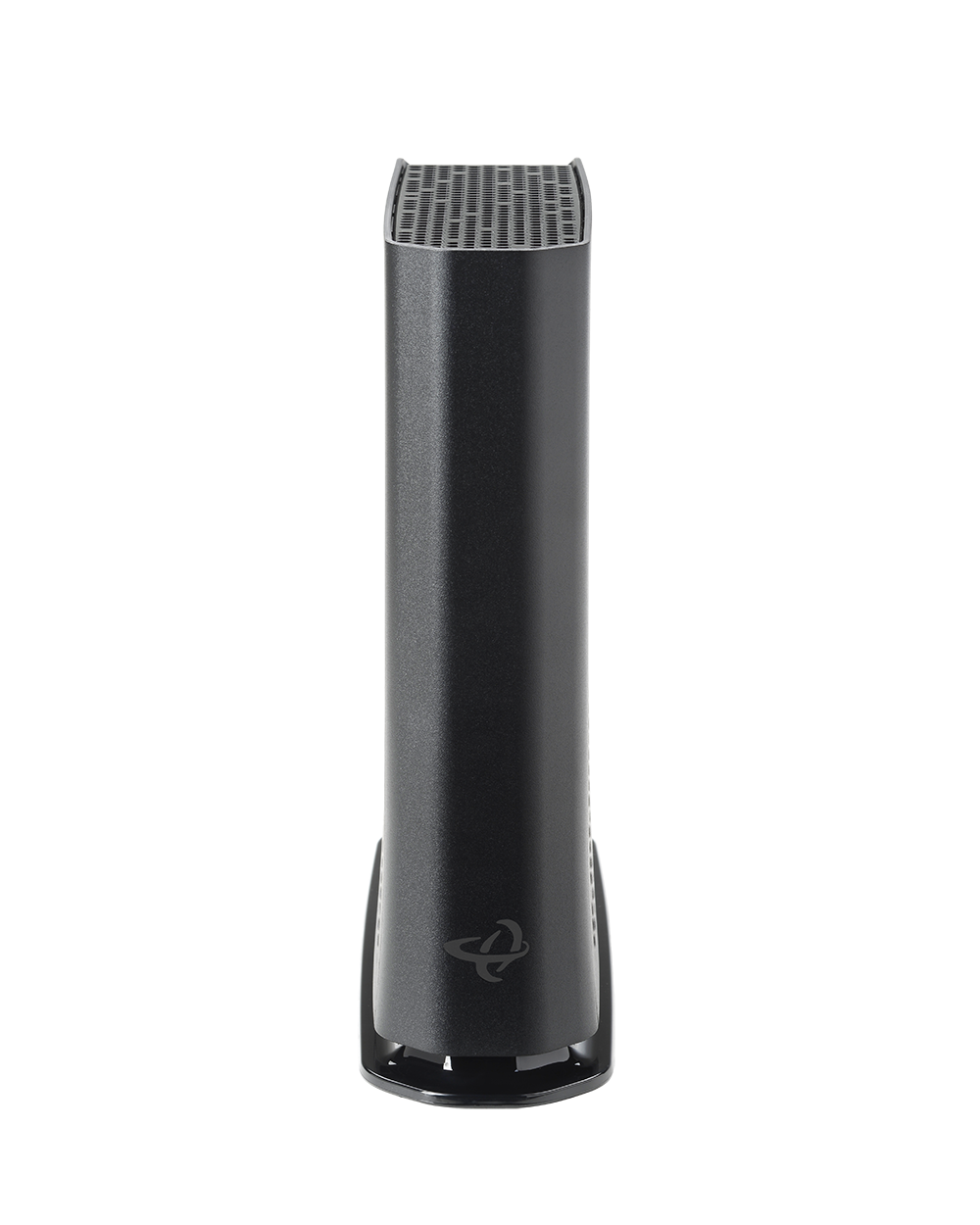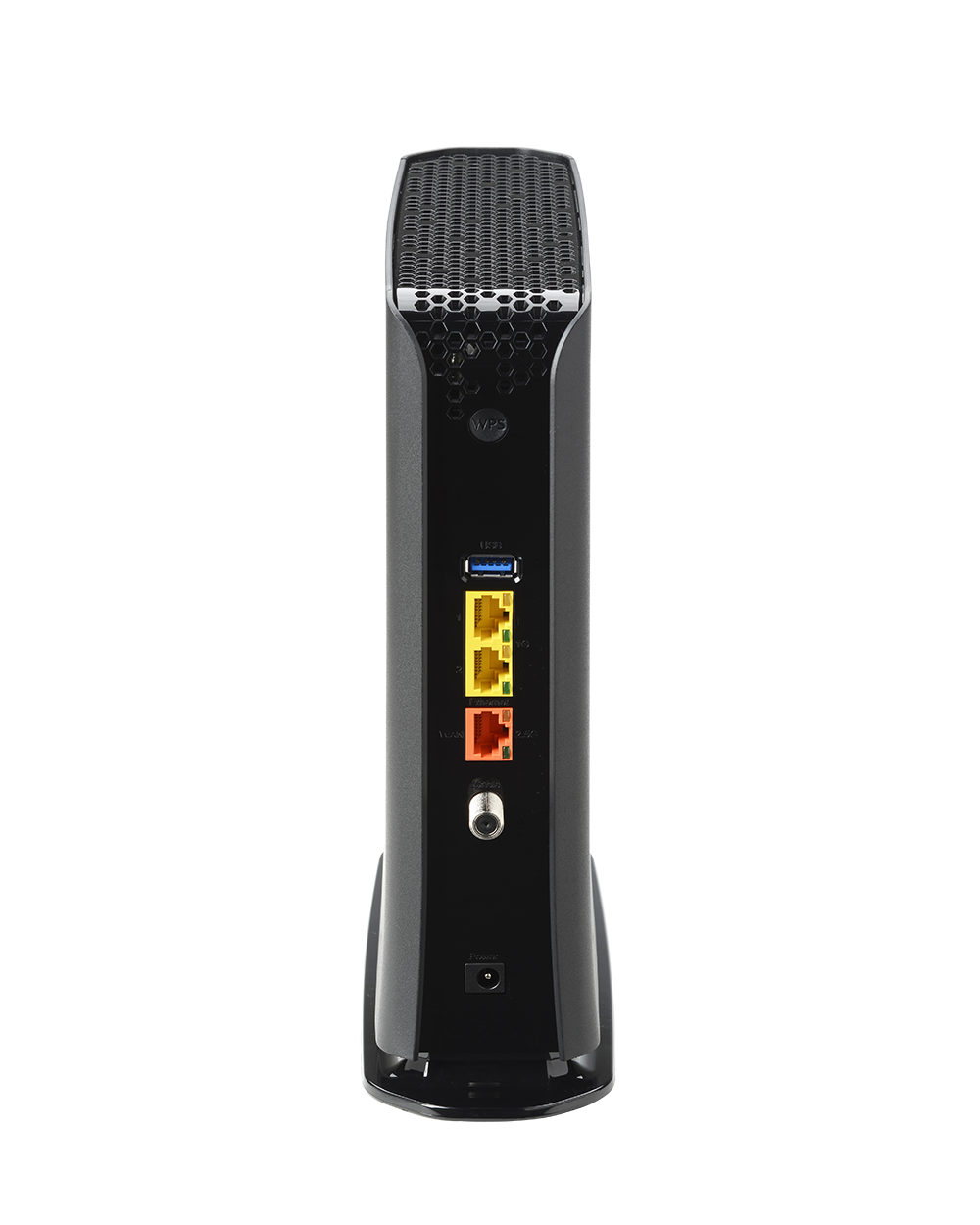DOCSIS 3.1 with Full Backward Compatibility
Supports 2×2 OFDM/OFDMA plus DOCSIS 3.0 32×8 bonding to ensure multi-gig performance today with smooth compatibility for existing DOCSIS 3.0 deployments.
Extended Downstream to 1218 MHz
Provides expanded downstream capacity, enabling more throughput and future-proofing networks for higher-speed broadband plans.
Flexible Upstream Frequency
Switchable upstream modes (5–85 MHz / 5–204 MHz) support mid-split and high-split transitions without hardware replacement.
Wi-Fi 6 Advantage
Dual-band Wi-Fi 6 with 4×4 5 GHz and 4×4 2.4 GHz radios ensures higher speeds, lower latency, and improved efficiency for multiple connected devices.
Multi-Gig Wired Connectivity
Features 1× 2.5 Gbps Ethernet port and 2× 1 Gbps ports for high-speed wired backhaul and device connectivity.
Carrier-Grade Management
Supports TR-069, TR-369, SNMP, and HNAP, and integrates with Hitron’s management ecosystem (MyHitron+, HitronCloud) for simplified provisioning, troubleshooting, and diagnostics.
Benefits for Service Providers
- Future-Proofed with Extended Downstream: Ready for faster broadband services thanks to 1218 MHz downstream support.
- All-in-One Simplicity: Combines DOCSIS 3.1 modem and Wi-Fi 6 router into one device to reduce install complexity and streamline support.
- Flexible Deployment: Backward compatible with DOCSIS 3.0 and adaptable to evolving upstream splits.
- Enhanced Customer Experience: Strong Wi-Fi 6 and multi-gig wired connections support 4K/8K streaming, gaming, smart homes, and more.
Key Specifications
- DOCSIS Support: DOCSIS 3.1 (2×2 OFDM/OFDMA) + DOCSIS 3.0 (32×8)
- Downstream Band: Extended up to 1218 MHz
- Upstream Modes: Switchable 5–85 MHz / 5–204 MHz
- Wi-Fi: Dual-band Wi-Fi 6 (4×4 5 GHz + 4×4 2.4 GHz)
- Ethernet Ports: 1× 2.5 Gbps + 2× 1 Gbps
- Management: TR-069, TR-369, SNMP, HNAP, MyHitron+, HitronCloud
- Other Features: IPv4/IPv6 support, multiple SSIDs, advanced security and firewall features
Documentation
Other Products to Consider
Product
Modem Type
Frequency
WiFi
Wired LAN
Voice
Learn More about Cable Modems & Routers
What’s the difference between a modem and a cable modem?
A modem and cable modem are different devices because of the services that they connect to. A DSL modem connects to landline or telephone lines (also referred to as Copper by Internet Service Providers). A cable modem connects to Cable TV wiring (coax or coaxial...
Cable Modem Routers: Band Steering Explained
In today’s world, smart devices and connected IoT devices are everywhere in every home. With all these devices connected on one network, it can get difficult to ensure a smooth online experience while streaming, gaming, and video-calling all under the same roof....
Cable Modem Channels Explained
Cable modems communicate directly with Internet service providers (ISP) to transmit data back and forth. This is also known as downstream and upstream channels of data and requires multiple channels for each to offer optimal performance. Here’s everything know about...
Can DOCSIS 3.1 Cable Modems Increase Speeds?
Fast Internet is often considered a household essential. So many everyday things require an Internet connection, from smart home technologies to computers and phones. Your cable modem plays an integral role in achieving the best possible Internet speeds since it’s...
Cable Modems Explained: Channel Bonding
Too much device traffic on one home Wi-Fi network leads to congestion which leads to slow Internet. That’s why modern cable modems have evolved to create more than one “lane” – or channel – to let that traffic through. This feature is called channel bonding. If you...




